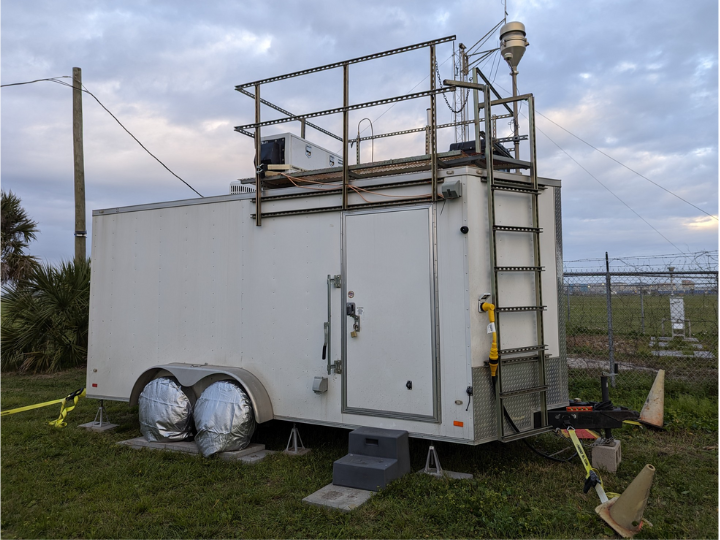James Flynn, a Research Associate Professor at the University of Houston, has been granted a $1.2 million research award by the Texas Commission on Environmental Quality. The grant will aid Flynn and his team’s research project focused on verifying the effects of wind-blown dust pollutants, biomass burning, and soot on air quality in Texas. Biomass burning can comprise agricultural burning, wildfires, prescribed burns, etc.
 Air quality monitoring lab equipment in Galveston. Image Credit: University of Houston
Air quality monitoring lab equipment in Galveston. Image Credit: University of Houston
Flynn, principal investigator, and his coworkers will mainly target urban air quality in major Texas cities along with Dallas-Fort Worth, Houston, and El Paso, performing measurements in the 2023 Texas ozone season (around April 1–October 31) with the use of optical instruments.
Smoke in particular has been linked to high ozone episodes. Along with the fine particulate matter (PM 2.5) in smoke, there are also gases in the smoke that form ozone. By looking at the optical properties of the fine particles, we can determine what is soot or dust or smoke, so we can then identify high ozone periods that have been impacted by smoke.
James Flynn, Principal Investigator and Research Associate Professor, Department of Earth and Atmospheric Sciences, University of Houston
Rebecca Sheesley, Professor of Environmental Science at Baylor University, is a co-investigator of the project, in addition to fellow Baylor Professor, Sascha Usenko. She describes the way in which far pollutants can move from one place to another.
Wildfire and dust pollutants can travel very long distances—across the US, across international borders, and even across the ocean.
Rebecca Sheesley, Professor, Environmental Science, Baylor University
New examples comprise dark orange skies in New York City owing to Canadian wildfires, hazy Houston days due to Saharan dust, and blankets of dust in El Paso from desert windstorms.
The study team will utilize instruments that include advanced tricolor absorption, a nephelometer and photometers, enabling the accurate measurement of particulate matter and their optical properties. Such instruments will be supplemented by state-of-the-art air quality monitoring devices alongside high-volume filter samplers and trace gas detectors.
Filter samples from particles can be analyzed for tracers of indicators of biomass burning. Certain filters will be analyzed using radiocarbon dating. This method can tell us the difference between carbon that comes from biomass burning and carbon that’s from fossil fuel burning, like that from power plants and vehicles.
James Flynn, Principal Investigator and Research Associate Professor, Department of Earth and Atmospheric Sciences, University of Houston
High Ozone Levels: Local Causes or Not?
Their research has the potential to offer clarity to policymakers as to the reason for high ozone. If ozone is emerging in with smoke plumes from the burning of biomass from another state, then it is not being locally produced; it is not arising from Houston activity, whether it is people driving cars, refineries, or power plants.
The study group will also gather information on meteorological parameters and levels of carbon monoxide to attain an all-inclusive comprehension of air quality dynamics.
In the Houston area, the research group will have three monitoring sites: one at the Galveston airport, another in Aldine, and the other one in Liberty County. In Dallas-Fort Worth, the team will have sites at a northwest Fort Worth TCEQ site and the Arlington Municipal Airport. The research group is functioning with the University of Texas at El Paso to recreate a monitoring site in El Paso. Flynn’s earlier air quality study in El Paso was performed in conjunction with UT El Paso.